|
Short of a total bottom end
rebuild with new Thrust Washers, Main Bearings and Rod
Bearings, there's never been an easy way to increase
your oil pressure quickly and inexpensively......until
now.
Below are two quick fixes
and the first is from Len Renkenberger, the author of
The Six-Tech Manual. Len was kind enough to let
Paul Rego and
I post his manual on our sites for enthusiasts to
download. His technique can be found on page E14 and is
rated Skill Level D..... for dummy I guess but perfect
for me.
His fix focuses on the Oil
Pressure Relief Valve (OPRV) and the spring that
controls the opening and closing of the valve. Because
the spring is cut from a continuous coil, there are
inconsistencies in its length and a small difference in
length can make a considerable difference in the
pressure exerted by the spring. The way you can correct
this problem is to place a #10 flat washer between the
spring and the head of the piston valve. Because this is
such an easy fix I decided to try it even though my
start up OP is in the 80 PSI range. After doing it, I
had 95 PSI at cold idle and it would jump to over 100
when I goosed the throttle. I plan on doing a bottom end
rebuild on the engine this winter (2010-2011) so I
removed the washer and the OP dropped back to my normal
range. Once the rebuild is complete, I'll see what my OP
is and decide if the washer is needed.
Here are the pictures on
how I did this.
|
This is Len's
OPRV Diagram |
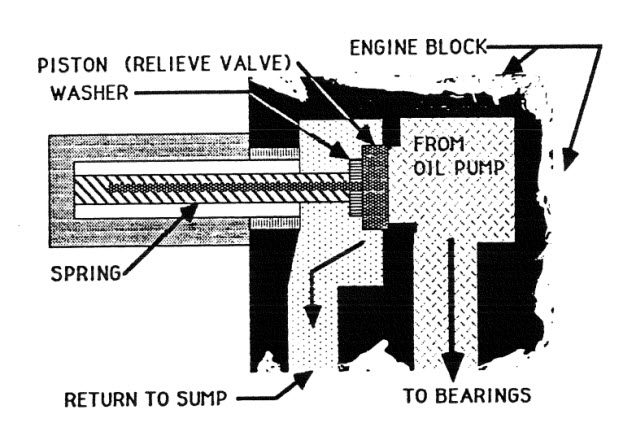 |
|
That's the
housing for the OPRV and you'll need a 7/8"
socket to remove it |
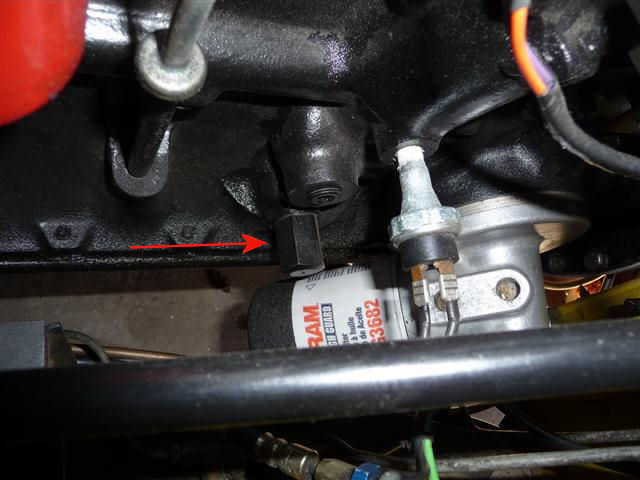 |
|
This is what
you'll unscrew from he block: housing,
spring and copper washer. |
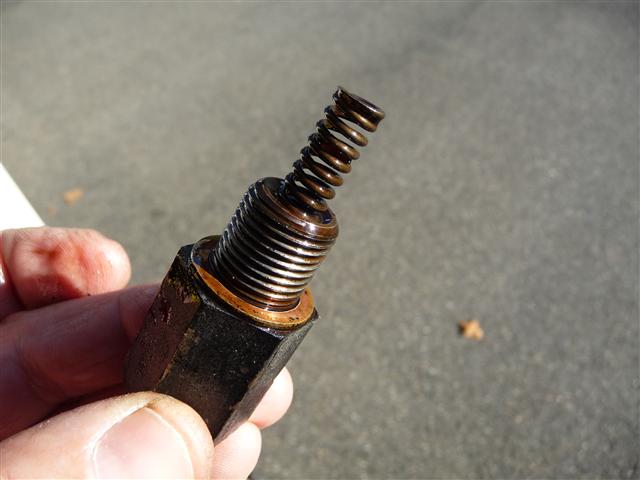 |
|
The piston can be
easily pulled out. Don't worry, there's
nothing to fall into the engine. |
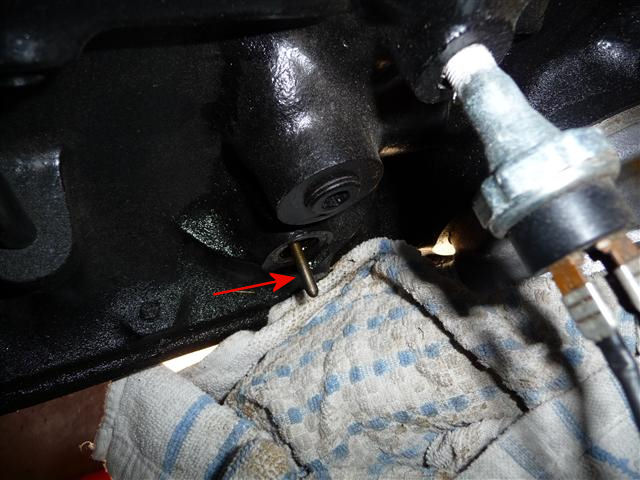 |
|
This is the
piston. |
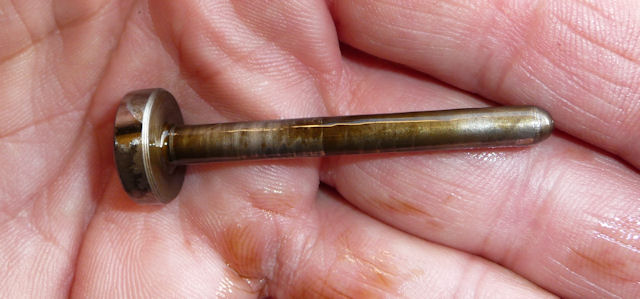 |
|
This is a #10
flat washer on the piston. |
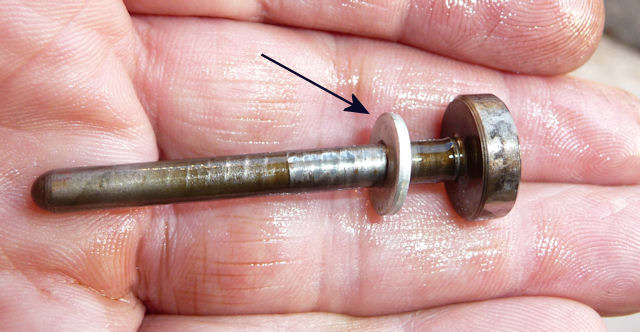 |
|
Reassembled and
ready to go back into the engine block. And
that is all there is to it. DO NOT add more
then one washer!! |
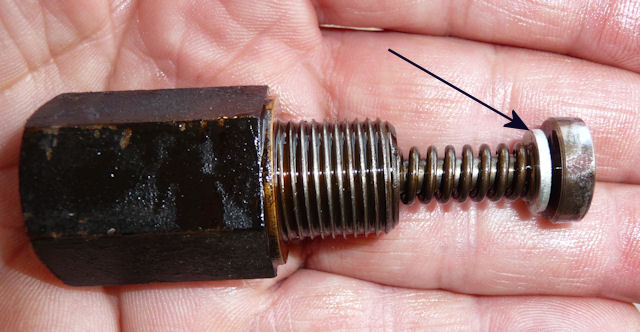 |
The second solution came from Bob
Lang and was shared with the Triumph Mail List. This is on my
winter "To Do" project along with the bottom rebuild.
Blueprint Your Oil Pump
The Bentley manual lists all the
clearances in the oil pump. That's all
really kool and everything, but unless your motor has a
gazillion miles on
it, the rotor clearances are _probably) okay and close
to spec.
However, there is a fix that I've done a bunch of times
that is easy and
pretty much automatically raises o.p pressure 10 psi
everywhere. Drop the
pan and pull the oil pump. the bottom cover of the oil
pump will likely
have scoring. On a flat surface with some emery cloth of
very find wet or
dry (400 or 600 grit) and some OIL, polish the cover
'till all evidence of
scoring is gone. Clean the part three times with brake
cleaner (make sure
there is no grit left on the surface (hopefully, for
obvious reasons)).
Reassemble.
I did this a couple of years ago when my oil pressure
idiot light kept
coming on at idle (motor hot). Oil pressure went from
under 10 psi to
about 25 psi. If your oil pump rotors are knackered, you
can buy new guts
for something like $30 from the various sources. You do
not need a new
pump body unless the outer rotor clearance is way off -
the inner rotor
tips to the rotating body clearances are most important,
then the pump to
body clearance and the only one (in my experience) that
matters is the
rotor to bottom clearance. Also note that if the rotor
is too deep in the
pump body (scoring on the upper end of the body) you can
reduce the
'height' of the pump body be polishing as described
above, BUT you must
make sure the pump body is square as well as flat or
you'll dish the
bottom cover and you'll be back to crappy oil pressure
in due time.
Cost: $5, $10 if you screw up the oil pan gasket (or
(shame of shames) you
glued it to the pan and block).
Time: 1 2 hours MAX. Most of that time will be trying to
figure out how to
put the three pan bolts that are just above the frame
rail. Leave 20
minutes to wash your hair of all the oil that drips on
you while you
remove the pump. Hint: use cardboard to keep the drips
off the floor and
let the motor drip for an hour or two before you pull
the pump.
Seriously, this is an easy fix. If it doesn't work, then
check your
bearing clearances. I'm amazed at how many motors have
low oil pressure
and the only problem is the oil pump clearances.'
|
